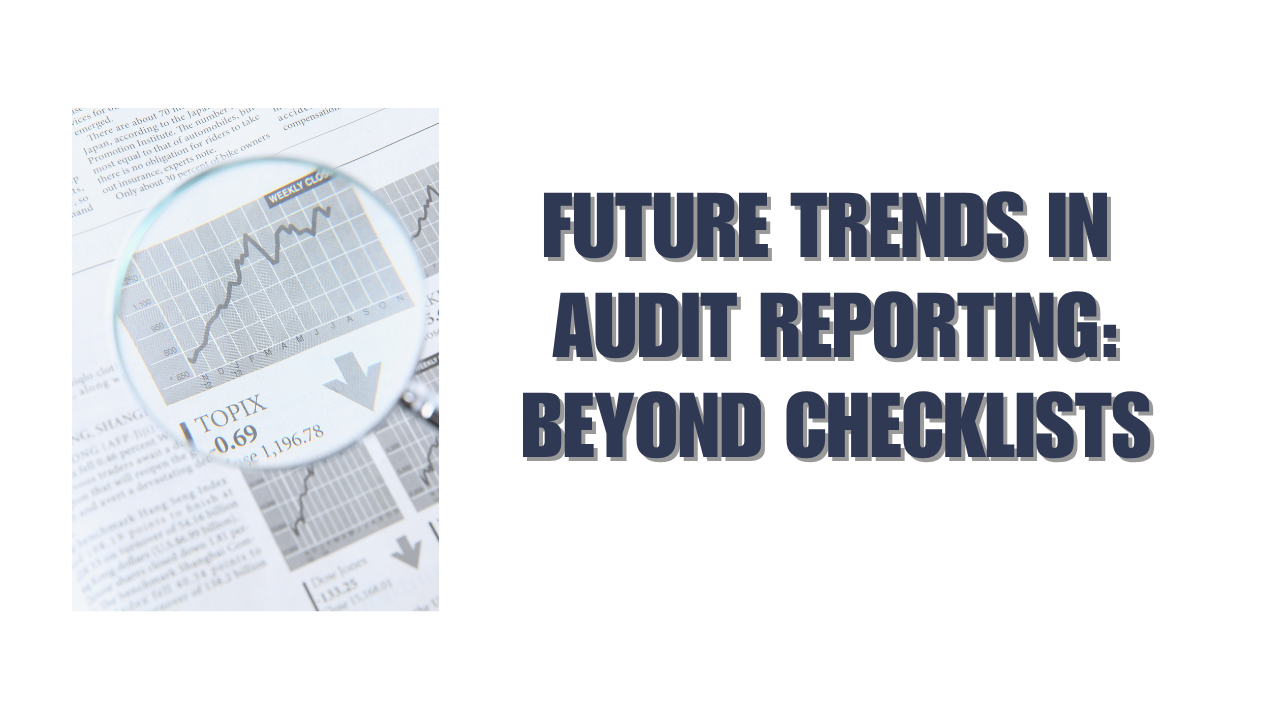Remote auditing has grown exponentially since 2019. Global outsourcing spending jumped 41%, and 79% of audits now take place either remotely or in hybrid form as of 2021. The pandemic changed our approach to financial oversight completely. What started as periodic, in-person activity became a dynamic, technology-driven process.
This transformation created remarkable financial results. Companies reduced their yearly travel expenses from $1300 billion to $500 billion. The Testing, Inspection, and Certification services market should reach $260 billion by 2025. But beyond these impressive numbers lie challenges and limitations that many financial leaders avoid discussing publicly. Remote auditing works just as well as traditional methods, yet it brings complexities that need honest examination.
Let’s take a closer look at remote auditing’s realities in 2025. Forward-looking organizations leverage competitive advantages while facing hidden obstacles that CFOs rarely discuss in public forums. We’ll explore the best practices, software solutions, and techniques reshaping audit processes. The story reveals what happens when physical oversight transitions to digital surveillance.
Why Remote Auditing Took Over After 2020
The COVID-19 pandemic completely altered the audit scene and turned occasional backup plans into everyday practice. Remote audits were rare before 2020. By 2021, 79% of all audits happened either remotely or in hybrid form. This quick change happened when lockdowns and social distancing forced audit teams to adapt overnight.
The pandemic’s lasting effect on audit practices
Emergency responses became permanent fixtures in the audit profession. Work-from-home rules made auditors accept new technology called remote auditing. Companies found that they could keep reliable security standards without physical presence. Deloitte’s April 2021 Return to Workplaces survey showed that 68% of executives wanted to use hybrid work models in the future. This showed that remote auditing wasn’t just temporary but marked a basic change.
Global expansion and the need for cross-border compliance
Remote auditing works well for international businesses. Traditional on-site audits became impractical for companies working with multiple regulatory environments. Remote auditing helps clients with global operations save money by cutting out multiple site visits. Teams can work across time zones in a single audit. This helps firms conduct cross-border audits and follow different international regulations effectively.
Cybersecurity as a driver for remote audit adoption
Growing fraud and data breach threats have sped up remote audit adoption. Companies offering remote audits put lots of money into cybersecurity protocols to keep client information safe. Big international organizations know this matters – the 2026-28 Work Plan focuses on cybersecurity audits and remote audits that use Internet of Things (IoT) technologies. This shows that reliable digital security measures matter greatly to keep audit integrity in virtual environments.
Regulatory changes pushing digital transformation
Rules have changed to allow remote methods. Many international standards now let auditors do partial or complete remote evaluations, including ISO 9001, ISO 14001, and ISO 27001. Digital accounting boosts economic efficiency by cutting accounting costs and improving accuracy. Regulatory bodies have started talking about using artificial intelligence, new technologies, and digital tools to make public auditing better and ensure citizen-focused governance.
What Remote Auditing Really Offers CFOs
Remote auditing saves money and gives CFOs new ways to run their operations better. The benefits go way beyond cutting travel costs – they reshape how finance leaders use their most valuable resources.
Reduced operational disruption
Remote audits cut down workplace disruptions that usually come with on-site visits. Teams don’t have to reserve meeting rooms, find places for auditors to stay, or set up physical spaces. The process combines smoothly with regular work, which lets employees stay productive throughout. The teams can focus on their main tasks instead of preparing for audits when these logistics disappear, which keeps operations running smoothly.
Improved audit objectivity and quality
Outside remote auditors bring more objectivity than internal teams, which reduces office politics’ influence on results. Research shows that remote work helps auditors think better, which leads to more creative solutions and better decisions when finding errors. The combination of data analytics and artificial intelligence with remote audits gives deeper understanding and makes findings more accurate. This tech upgrade lets auditors automate routine work and tackle complex problems that need professional judgment.
Live insights for faster decision-making
Live monitoring capabilities stand out as one of remote auditing’s biggest advantages. CFOs get quick access to:
- Live audit data to spot problems quickly
- Advanced dashboard analytics that show findings visually
- Continuous monitoring tools for faster strategy shifts
This speed turns audits from looking backward into forward-thinking strategic tools. Executives can make smart decisions without waiting for long audit cycles to finish.
Access to global audit talent
Remote auditing breaks down location barriers, so finance departments can find expert help anywhere. Companies can now hire from a worldwide talent pool, bringing in different skills and viewpoints that make audits better. CFOs can match specialists to specific tasks, making sure the right experts handle complex issues. This flexibility helps with training too, making it easier to share knowledge between audit teams.
The Tools Powering Remote Auditing in 2025
The digital backbone of remote auditing in 2025 depends on connected technologies that change traditional assessment methods. Let’s look at the tools that drive this progress.
Cloud-based remote auditing software
Cloud platforms are the life-blood of modern audit processes and provide continuous connection whatever the location. Most accounting professionals (67%) now choose cloud accounting, while 56% say these technologies have boosted their productivity. Teams can maintain uninterrupted shared work during complex tasks through cloud-based solutions. Companies using fully cloud-based accounting see a 15% year-over-year revenue growth.
AI and data analytics for anomaly detection
AI-powered audit tools have changed how auditors spot suspicious activities. These systems analyze all financial transactions instead of using traditional sampling. They detect three types of anomalies:
- Point anomalies (single unusual transactions)
- Contextual anomalies (transactions unusual only in specific contexts)
- Collective anomalies (normal transactions that form suspicious patterns when viewed together)
EY Helix GL Anomaly Detector and MindBridge AI use machine learning algorithms to flag potential fraud, which is a big deal as it means improved detection accuracy.
Secure communication and document sharing platforms
Remote audit delivery platforms range from simple services using off-the-shelf tools like Teams and FaceTime to premium solutions with secure bilateral connections and smart glasses. Good platforms include:
- Encrypted data transmission
- Immediate screen sharing capabilities
- Secure document management with controlled access
Automated risk-based engagement systems
These smart systems watch for threats and show risks as they happen. They work like “digital watchdogs” by scanning data for anomalies, reviewing potential effects, and alerting immediately when they detect threats. Problems get identified and fixed quickly before they grow larger.
Online confirmation and e-signature tools
E-signature tools create complete audit trails that document when, where, and how people sign documents. Each signed document gets a signature card with IP addresses, timestamps, and verification methods. These tools make processes faster, cutting document turnaround time by 80% and saving about €90 per document.
What CFOs Won’t Tell You About Remote Auditing
CFOs privately admit some uncomfortable truths about remote auditing, despite its growing popularity. These hidden realities rarely come up in board meetings but substantially affect financial oversight.
Hidden challenges of remote auditing
Remote audits face real technical hurdles behind the scenes. Audit teams just need better home internet connections and updated hardware to work effectively. Communication gaps have become a big problem, with 46% of auditors saying they struggle to get information from clients in virtual settings.
Limitations in physical asset verification
Physical asset checks remain the weak spot in remote auditing. Virtual inspections can’t match the effectiveness of hands-on examination to spot asset condition issues, equipment changes, or inventory problems. High-definition video streams help, but remote auditors still miss subtle details that on-site teams would spot right away.
Security risks and data protection concerns
Remote auditing creates new cybersecurity weak points. Sensitive financial data moving across multiple networks multiplies the risk. Auditors working from home might not have enterprise-level security measures, which puts confidential information at risk.
When on-site audits are still necessary
Some situations need people on the ground – first-time audits, complex manufacturing reviews, and fraud investigations top the list. Cross-border audits work better with on-site components, especially when cultural differences shape financial practices.
How internal politics can influence remote audit outcomes
Company politics can still mess with remote audits. Key stakeholders find it easier to control information flow without direct observation, which might hide unfavorable findings. The distance makes it harder for auditors to get the full picture of company culture – a crucial element in assessing fraud risks.
Conclusion
Remote auditing has without doubt revolutionized financial oversight over the last several years since 2020. This transformation goes beyond a temporary response to pandemic restrictions and points to a complete restructuring in business compliance and verification processes. Companies across the globe have cut travel costs substantially while tapping into worldwide talent pools and expert knowledge.
The reality of remote auditing brings notable limitations that need attention. Physical asset verification poses challenges, security risks remain, and some audit scenarios require people on site. Successful CFOs know they must balance state-of-the-art capabilities with real-life constraints.
The audit landscape of 2025 and beyond will likely blend both remote and traditional approaches. Companies need reliable cloud platforms, AI-powered analytics tools, and secure communication systems to get the most from remote capabilities. Traditional on-site methods still prove invaluable in specific situations.
Smart companies tailor their audit strategies to their unique business needs rather than chase industry trends. State-of-the-art remote auditing technology advances faster each day, yet human judgment stays crucial to interpret results and make strategic choices. The most effective audit transformations will combine technological advancement with human expertise to create adaptable systems ready for tomorrow’s financial oversight challenges.
FAQs
Q1. How has remote auditing changed since 2020?
Remote auditing has become the norm, with 79% of audits now conducted remotely or in hybrid form. This shift has led to reduced travel expenses, improved access to global talent, and the adoption of advanced technologies like AI and cloud-based platforms for more efficient auditing processes.
Q2. What are the main benefits of remote auditing for CFOs?
Remote auditing offers CFOs reduced operational disruption, improved audit objectivity and quality, real-time insights for faster decision-making, and access to global audit talent. It also allows for more frequent and comprehensive audits without the logistical challenges of on-site visits.
Q3. What tools are essential for remote auditing in 2025?
Key tools for remote auditing include cloud-based auditing software, AI and data analytics for anomaly detection, secure communication and document sharing platforms, automated risk-based engagement systems, and online confirmation and e-signature tools.
Q4. Are there any limitations to remote auditing?
Yes, remote auditing has limitations in physical asset verification, potential security risks and data protection concerns, and challenges in assessing organizational culture. Some complex situations, like first-time audits or fraud investigations, may still require on-site presence.
Q5. How does remote auditing impact audit quality?
Remote auditing can improve audit quality through enhanced objectivity, access to specialized expertise, and the use of advanced analytics. However, it also presents challenges in communication and information gathering, which auditors must actively address to maintain high standards of quality.






